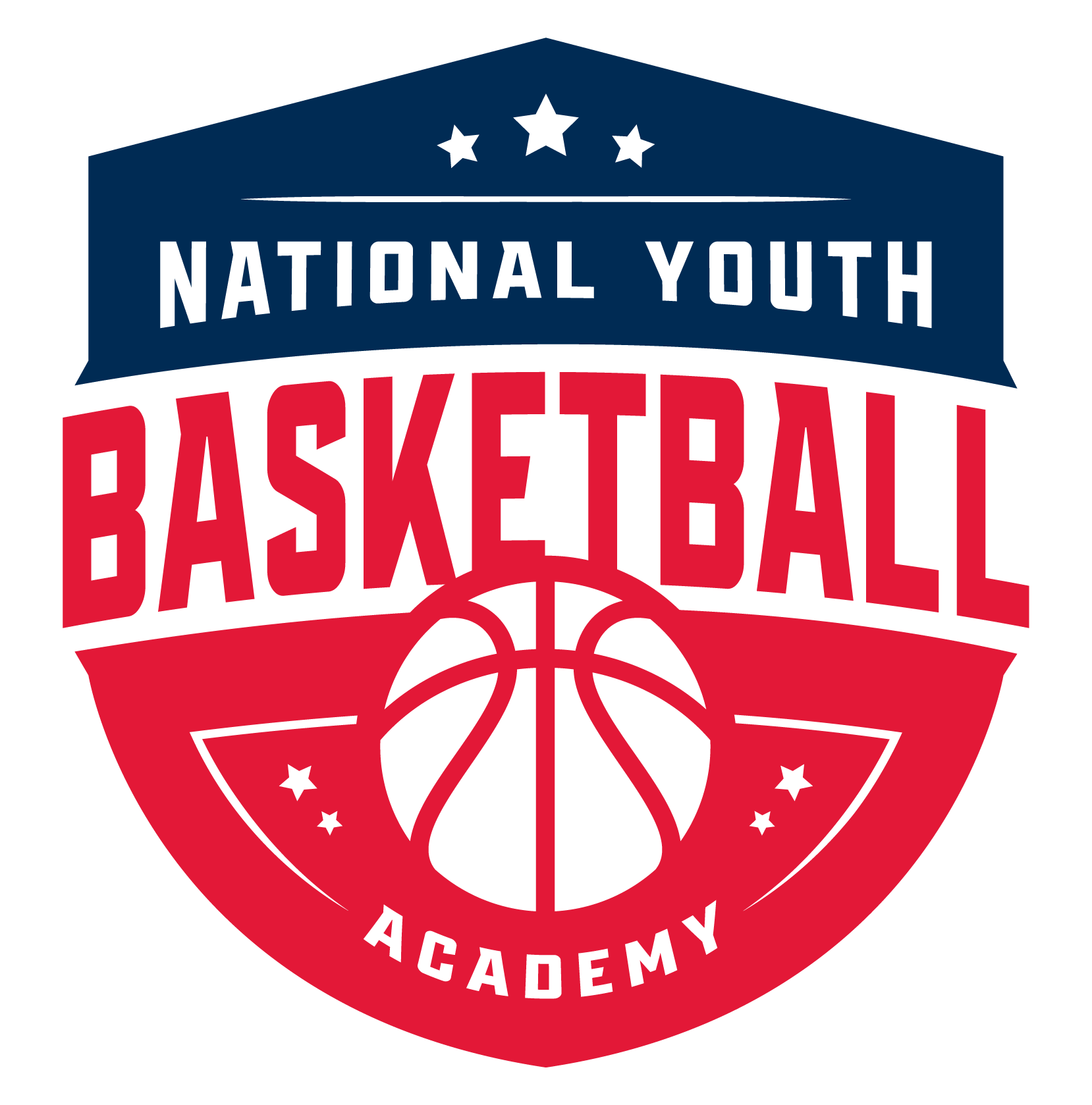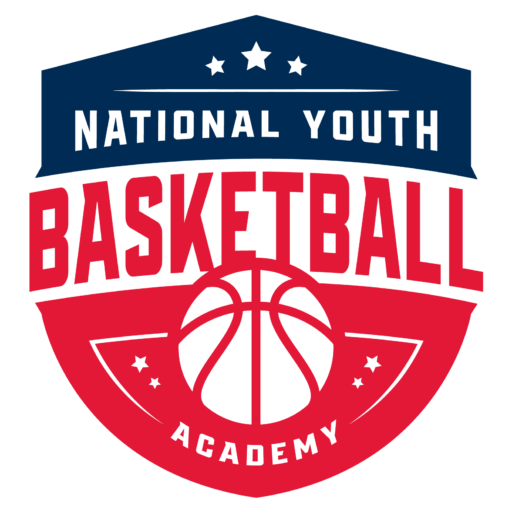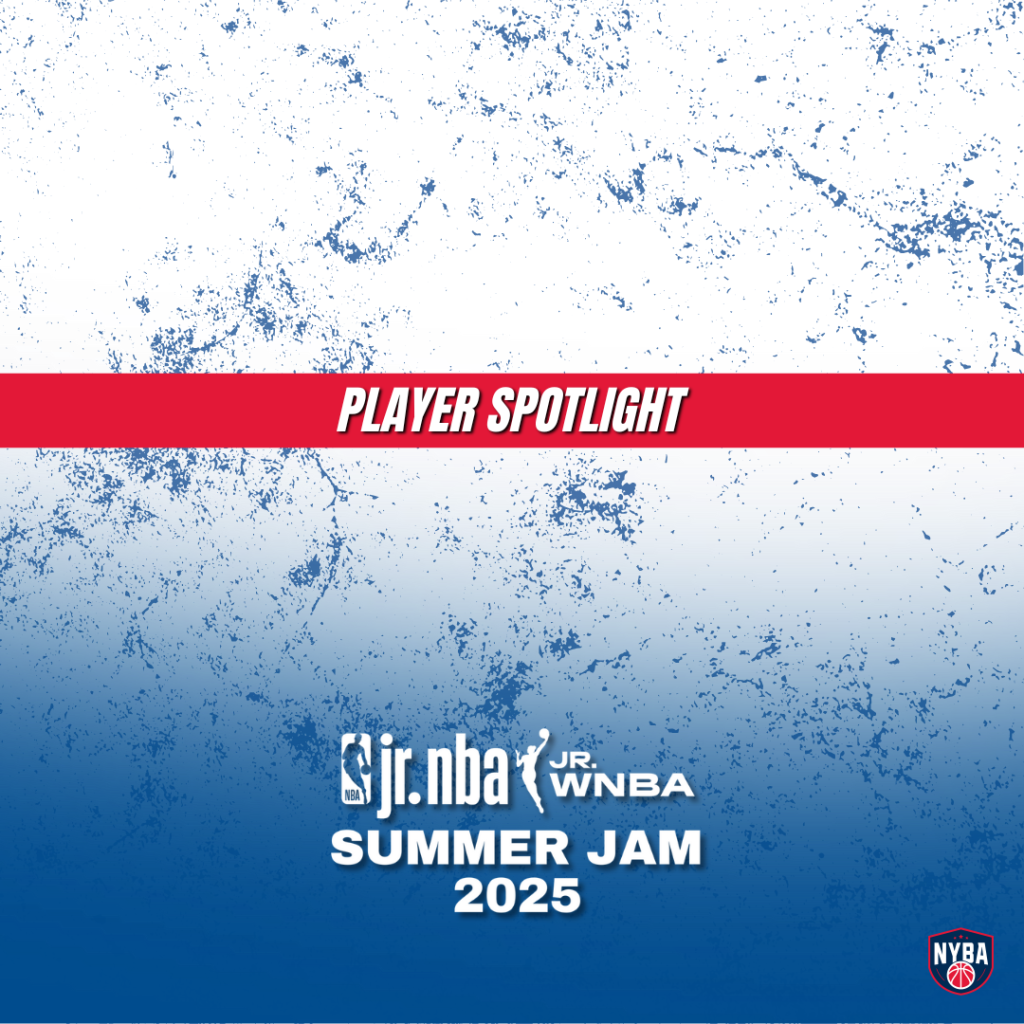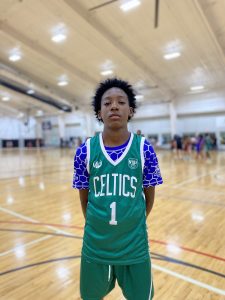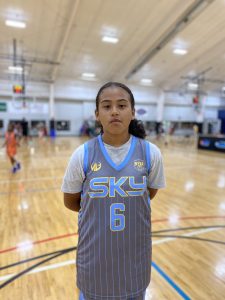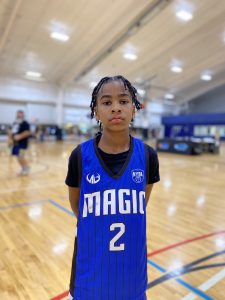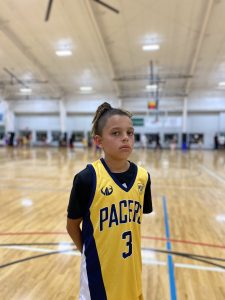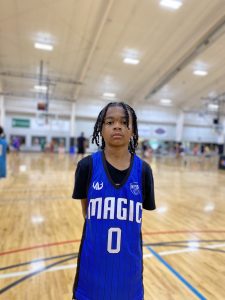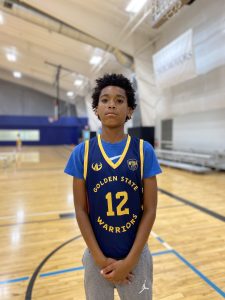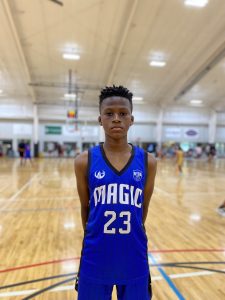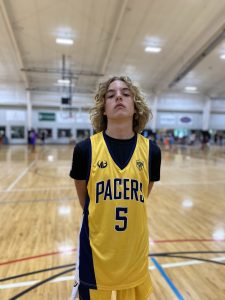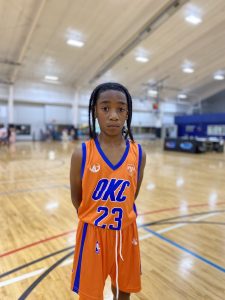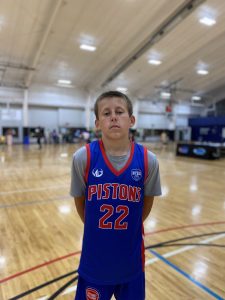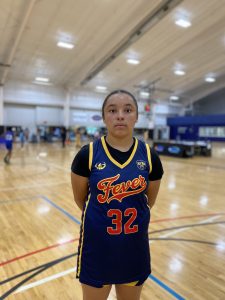Grand Rapids, MI — Each day at Jr. NBA/ Jr. WNBA Camp, the coaching staff carefully evaluates players across all age divisions—focusing not just on highlights, but on decision-making, effort, and how players impact the game. This spotlight series recognizes campers who stood out through consistent performance, situational awareness, and competitive instincts. While these write-ups reflect moments of confidence and growth, they are measured—rooted in what was observed, not exaggerated.
Christian Broyles
A two-time Jr. NBA champion and two-time Most Outstanding Player, Christian Broyles returned with measurable growth in multiple areas of his game. Offensively, he excelled as a floor spacer—knocking down perimeter shots off the catch with confidence. His ability to operate in space, read advantages, and move without the ball gave his team consistent offensive rhythm. Defensively, Broyles showed improved awareness in help-side rotations and committed to the glass at a higher level than in previous appearances. Most notably, he played with greater trust in his teammates.
Sariyah Rincones
In her Jr. WNBA debut, Sariyah Rincones displayed instincts and skill that suggest long-term upside as a dynamic guard. She consistently created paint touches off the dribble, applying pressure on defenders with a quick first step and willingness to absorb contact. Her shot-making was efficient in live-ball settings, and she showed the ability to finish through traffic or space. On the defensive end, Rincones played with a high motor, showing early signs of lateral quickness and positional competitiveness.
Kalin Guyton
With one of the most decorated resumes in Summer Jam’s history—three-time Jr. NBA participant, two-time champion, and two-time Most Outstanding Player, Kalin Guyton entered camp with both pedigree and expectation. Competing one to two years up once again as the youngest player in his division, Guyton maintained his reputation as a two-way contributor. Offensively, he consistently pressured the paint—attacking off the bounce, playing off two feet in traffic, and showcasing advanced reads out of ball screens. His ability to manipulate space and make real-time decisions allowed him to score or create effectively without overhandling. On the defensive end, he set the tone at the point of attack with high-intensity ball pressure and consistent engagement across possessions. Guyton’s commitment was so high that he required a 30-minute intermission to clean up blood from his nose and mouth after deflecting a pass and diving into contact—another example of the all-in effort that continues to define his game.
Jelani Beene
Jelani Beene entered camp with returning-player equity and embraced the role of lead guard from the outset. A former Jr. NBA All-Star and Max Effort Award winner, Beene set the tone early with his vocal presence and decision-making. He showed the ability to manage tempo, read defensive spacing, and deliver timely passes in both transition and half-court sets. While capable of scoring when needed, his primary value came through orchestrating offense and maintaining cohesion within his unit. Bean’s leadership translated not just through communication, but through his ability to consistently make the right play at the right time.
Braylen Guyton
Now in his third Jr. NBA appearance, Braylen Guyton continued to elevate his profile while competing a full year up in age group—just as he did last season, two years up. The shift in level didn’t hinder his ability to control pace and make high-level reads as a true lead guard. Guyton consistently demonstrated the ability to process the floor in real time, delivering passes ahead of the defense and generating efficient transition opportunities. His feel for spacing and timing allowed him to operate as a connective piece, keeping his teammates. Defensively, he played with strong awareness—disrupting passing lanes, sitting in gaps, and generating turnovers through anticipation rather than risk.
Miles Turley
In his Jr. NBA debut, Miles Turley wasted no time making an impression. A long, athletic lefty with natural tools, Turley operated with confidence—both in how he played and how he communicated. He took ownership as a vocal leader, directing traffic offensively and helping organize teammates on the floor. Offensively, he generated consistent paint touches, showed soft touch around the rim, and converted from the perimeter with balance and repeatable mechanics. His ability to operate in space and run lanes in transition added to his offensive versatility. Playing 1–2 years up in age, Turley handled the physicality and pace with poise.
Tylar Cross-Hamilton
Making his Jr. NBA debut, Tylar Cross-Hamilton brought clear value as a long, athletic interior presence. Recently back in the gym and rounding into form, Cross-Hamilton immediately asserted himself as a high-motor contributor on both ends. Defensively, his length altered shots and disrupted passing lanes, while his rebounding instincts—especially on the offensive glass—created repeated second-chance opportunities. His hands were reliable in traffic, securing tough boards and drop-off passes in the dunker spot, where he consistently finished over the top of defenders. His presence around the rim gave his team extra possessions and efficient low-touch scoring.
Linus Schmidt
A two-time Jr. NBA participant, Linus Schmidt returned with clear developmental strides. Known previously for his perimeter shooting and floor spacing, Schmidt expanded his offensive profile by establishing consistent interior presence. He finished efficiently around the rim with both hands, showing improved footwork, balance, and touch through contact. His ability to shift between spot-up spacing and paint production speaks to his adaptability within different offensive sets. Defensively, he brought effort and physicality—competing on every possession and using his frame to contest shots and battle for positioning.
Jayceon Moffett-Foster
In his second Jr. NBA appearance, Jayceon Moffett-Foster showed clear signs of growth, particularly in his confidence and assertiveness. A long, fluid athlete, Moffett-Foster made timely plays on both ends—knocking down perimeter shots within the flow and filling lanes effectively in transition. He excelled in open space, using his length and mobility to create advantages off the ball. Defensively, he was a consistent disruptor, applying pressure at the point of attack while also making rotations and reads off-ball.
Brayden Richard
A returning Jr. NBA participant, Brayden Richard stepped into a leadership role this year—guiding his Pistons squad with poise and confidence. He showed increased comfort handling the ball under pressure and took on more responsibility as a primary scoring option. Richard finished effectively through contact, converting in traffic. Defensively, he played with consistent effort, competing at the point of attack and showing pride in individual matchups. With a stronger sense of control and vocal presence.
Mia Phillips
Making her Jr.WNBA debut Mia Phillips delivered one of the more physically assertive performances of the day. A strong-bodied guard with a downhill mentality, she consistently applied pressure on the rim—getting into the paint with force and finishing through contact. Her presence on the offensive glass stood out, generating second-chance points and put-backs that shifted momentum. Defensively, she competed with physicality and stayed active on the boards.
